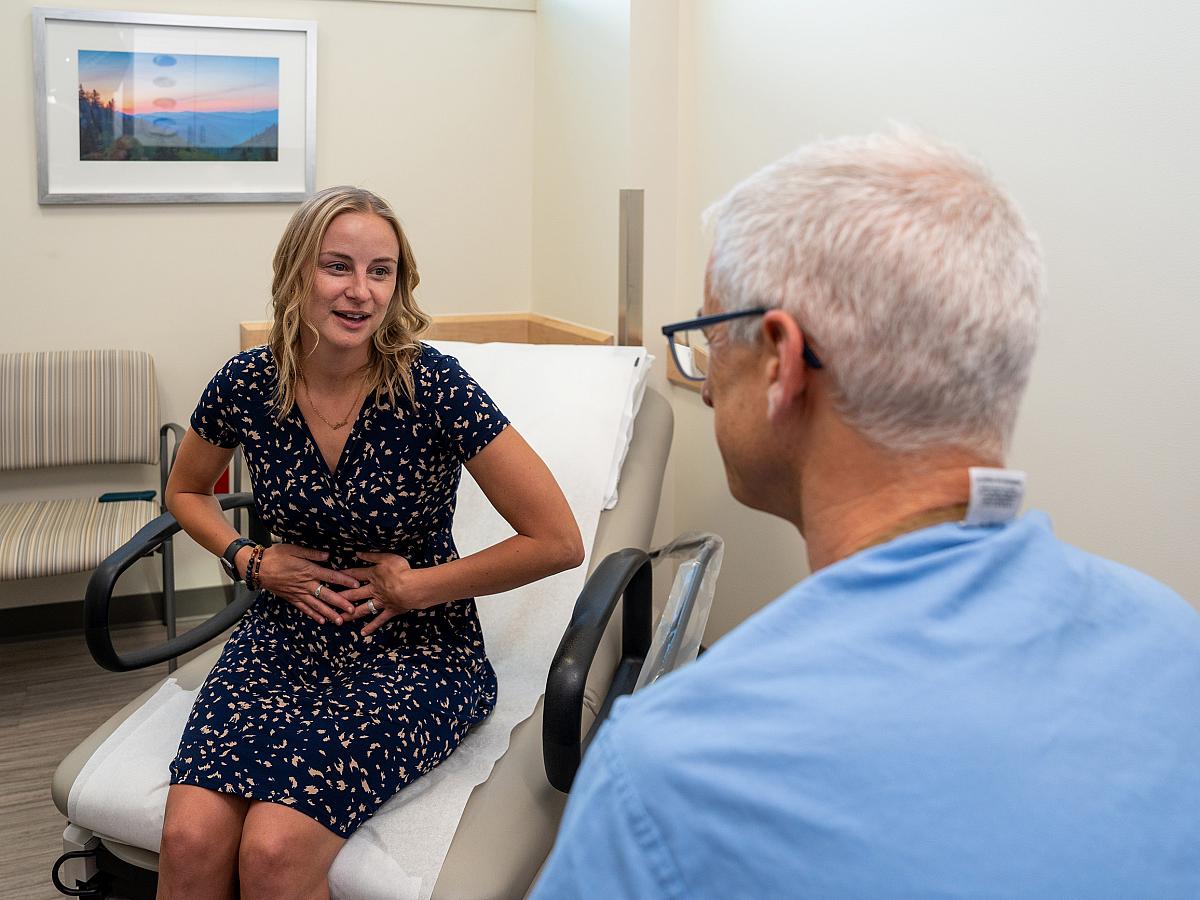
Treating Prolapse with Surgical Precision & Experience
Prolapse (when the organs inside your pelvis, such as your bladder, vagina, uterus, cervix, and rectum, drop or fall) is a common condition. However, many women are unaware that treatment options are available. At University of Utah Health, our urogynecology specialists treat patients and conduct extensive research to better understand pelvic floor conditions. This helps us accurately diagnose your condition and tailor your treatment to your needs.
Urogynecologists are gynecology specialists with three additional years of training focused exclusively on pelvic floor disorder treatment, such as urinary incontinence and prolapse. Due to their specialized background, urogynecologists are able to provide improved outcomes for prolapse surgery than other surgeons who do not have as much experience or expertise in prolapse surgery.
Types of Prolapse Surgery We Offer
Our urogynecologists perform:
- bladder prolapse surgery,
- uterine prolapse surgery,
- small intestine (small bowel) prolapse surgery, and
- vaginal prolapse surgery.
There are different ways to repair the pelvic floor after prolapse. The type of surgery you need depends on:
- what organ(s) are prolapsed,
- your anatomy,
- whether you are sexually active,
- whether you plan to have children in the future, and
- other factors unique to your medical history or personal situation.
Not everyone who has prolapse will need surgery. Your urogynecologist will talk to you about your prolapse symptoms. We will recommend both non-surgical and surgical options if your quality of life is significantly affected by the prolapse.
Prolapse Surgery Pros & Cons
The main advantage of prolapse surgery is improving your quality of life. Surgery may be considered for patients experiencing:
- stress urinary incontinence,
- discomfort, or
- prolapse that is bad enough to interfere with daily life.
However, prolapse surgery does have some risks, such as:
- bleeding,
- infection,
- problems associated with anesthesia, or
- recurrent prolapse, which only happens in a small percent of women.
What to Expect at Your Appointment with a Urogynecologist

When you first see one of our urogynecologists, they will review your medical history and discuss your symptoms. We will perform a physical exam to see which organ(s) are moving and how much they have moved. During the examination, we will ask you to lie down and stand up because gravity will sometimes affect how much your prolapse changes. Our urogynecologists will talk to you about non-surgical treatments and prolapse surgery options.
If your prolapse is not bad enough to need surgery yet, we may recommend:
- waiting and observing to see if it gets any worse,
- Kegel exercises to strengthen your pelvic muscles,
- physical therapy to strengthen pelvic muscles, or
- pessary (removable silicone device that goes inside the vagina and holds up your organs).
If your symptoms are severe or you have tried non-surgical treatments and your prolapse has worsened, we will discuss your surgical options.
Find a Urogynecologist
Prolapse Surgery
Most prolapse surgeries are done as a minimally invasive procedure without a large incision (cut). This procedure is typically performed under general anesthesia (put to sleep). You and your urogynecologist will create a detailed plan before the procedure so you know what to expect. Your surgery may last between 30 minutes and 4 hours, depending on the types of repairs and difficulty of the reconstruction process.
Your urogynecologist will access the area where they need to perform the procedure in one of three ways:
- through your vagina with no incisions (cuts) on the outside of your body,
- laparoscopically through several small incisions in your abdomen, or
- through a larger incision in your abdomen.
The route that your urogynecologist selects will depend on the procedure you are having, your anatomy, and past surgeries that might affect the tissues in your pelvic floor.
Your urogynecologist will repair the area that is prolapsed and perform any other repairs or procedures to strengthen and secure the pelvic floor. These could include:
- repairing your bladder,
- adding surgical mesh to support your organ(s), or
- performing a hysterectomy to remove your uterus.
Prolapse Surgery Recovery
Recovering from prolapse surgery will take one to six weeks, depending on the extent of repairs. You will have a follow-up visit with your urogynecologist six weeks after your surgery.
Restrictions after Prolapse Surgery
- Do not put anything inside your vagina for six weeks (e.g., no tampons, no sexual intercourse, etc.).
- Do not lift anything over 15 pounds for two to six weeks. Your doctor will tell you how long you need to restrict lifting based on your surgery.
- Do not do any high-intensity exercises, such as running, aerobics, or weightlifting.
Pain after Prolapse Surgery
You will experience cramping or pressure in your pelvic area after your surgery. Most people experience this pain for about two weeks, but it may last up to six weeks. If you have an abdominal incision, you may have pain around the incision as it heals. Some people take prescription and/or over-the-counter pain medication to help manage their pain.
Signs of Complications
Contact your doctor right away if you have:
- severe pain that does not improve or gets worse;
- signs of infection, such as fever, chills, or redness that is spreading around your incision site;
- heavy vaginal bleeding (light bleeding or spotting is normal); or
- symptoms of a urinary tract infection (UTI), such as pain when you urinate, foul-smelling urine, blood in your urine, or frequent urge to urinate.
Walking after Prolapse Surgery
You will be able to get up and walk around the same day as your surgery. You should be able to resume normal activities of daily living (such as showering, dressing yourself, and cooking) the day after your surgery.
Returning to Work
Most people will be able to return to work between two and six weeks after surgery. Talk to your surgeon to discuss when you can return to work.
Prolapse Surgery Success Rates
The success of prolapse surgery depends on many different factors, including:
- how bad your prolapse is,
- what parts of your pelvic floor is affected,
- what type of surgery you get, and
- lifestyle or genetic factors that could increase the risk of another prolapse in the future.
Studies show that about 80 percent of prolapse surgeries are still successful after 10 years. About 10 to 20 percent of women will have some movement or bulging again, but it’s usually not enough to need another surgery. Only about two to three percent of women will need a repeat prolapse surgery.

Make an Appointment with a Urogynecologist
Call 801-213‑2995 to request an appointment with one of our urogynecologists to discuss your prolapse and find out if prolapse surgery is the right option for you. Physicians can also refer patients to a urogynecologist using our online referral form, or by contacting our office.
You do not need a referral to see a urogynecology specialist at U of U Health, but some insurance plans require that you get a referral from your primary care provider (PCP) to see a specialist. Contact your insurance carrier with questions.





